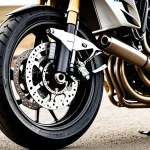Importance of Airbag Sensitivity in Minivans
Ensuring minivan safety is vital, especially when it comes to airbag systems. Airbags play a crucial role in passenger protection by deploying during collisions to cushion and prevent injuries. The sensitivity of these airbags is particularly important to ensure effectiveness across varied passenger weights and sizes. This sensitivity determines how an airbag will deploy, adapting its force to prevent additional harm, especially to younger and lighter passengers.
Calibration of airbag sensitivity is a technological marvel that tailors the deployment of airbags. For instance, vehicle sensors gauge weight and seating position, adjusting force accordingly. This is especially important for passenger protection, minimizing risks of severe airbag-related injuries.
A lire en complément : Unlocking UK Compliance: The Definitive Guide to Installing Aftermarket Body Kits
Statistics reveal airbags significantly lower the chance of fatal injuries during car accidents. Properly functioning airbags can reduce the risk of death in a severe crash by up to 30%. This underscores the importance of precise sensitivity settings to maximize safety.
Given these facts, regular checks of airbags and sensitivity calibration are indispensable aspects of maintaining minivan safety. These adjustments enhance the ability to protect passengers of all sizes, stepping in as silent guardians during unforeseen accidents. Such meticulous attention ensures the continuity of life-saving benefits provided by these crucial safety features.
A découvrir également : Revitalize Your Classic UK Car with Adaptive Cruise Control: A Comprehensive, Easy-to-Follow Guide
Effective Tactics for Optimizing Airbag Systems
When it comes to safeguarding passengers, especially within a minivan, efficient airbag optimization plays a pivotal role. Proper adjustment techniques enhance safety tactics, reducing the risk of injury during accidents. This section sheds light on essential approaches to fine-tune airbags for maximum effectiveness.
Regular Maintenance and Calibration
Regular checks of the airbag system are paramount to ensure peak functionality. Routine maintenance can catch potential issues early, ensuring airbags perform correctly when needed. Technicians recommend aligning these checks with scheduled vehicle services, perhaps every 12,000 miles or annually. During calibration, experts evaluate sensor accuracy and ensure the system adapts correctly to various passenger weights.
Adjusting Passenger Settings
Modern minivans often feature adjustable settings to account for individual passenger characteristics. Understanding and utilizing automatic airbag shut-off features contributes to minimizing unnecessary deployments, especially when using child safety seats. By ensuring correct seat placement and configuration, caregivers can significantly bolster passenger protection.
Upgrading Airbag Technologies
State-of-the-art airbag technologies represent a leap in safety compared to older models. Recent advancements include multi-stage deployment and more sensitive sensor arrays. Such innovations underscore manufacturers’ commitment to improving airbag features, making them more responsive to diverse scenarios, ultimately enhancing the safety of all passengers.
Best Practices for Passenger Safety
Passenger safety practices are crucial for minivan safety features, aimed specifically at enhancing family protection. Prioritising seatbelt use is essential. Seatbelts fundamentally reduce the risk of serious injury during accidents, making this non-negotiable for all passengers. Ensuring everyone buckles up should always be the first step when entering a minivan.
When arranging seating, optimal safety involves:
- Placing younger children towards the middle seats, where airbags are less likely to cause harm upon deployment.
- Consideration of the weight and size of passengers for effective airbag deployment, ensuring heavier adults are positioned where airbags are factory-tuned for their protection.
Understanding the minivan’s height in relation to airbags is also an overlooked aspect of passenger safety. Because minivans are typically higher off the ground than sedans, the angle and force of airbag deployment can be different, affecting how safely they cushion passengers during a crash. Awareness about this can prompt drivers to adjust seating and passenger layouts for maximised safety. Adopting these guidelines enables families to leverage design features effectively, offering layered protection for all occupants, no matter their seating position.
Expert Opinions on Airbag Technology
Engaging with airbag technology experts reveals key insights into enhancing passenger safety through advanced technological integration. In interviews with leading figures in automotive safety, experts highlight the pivotal role of data-driven safety analysis in evaluating airbag performance. They emphasize the need for regular training programs for technicians, ensuring that maintenance meets the latest industry standards.
Recommendations for parents and caregivers regarding airbag usage often include understanding the deployment mechanics, prioritizing seatbelt usage, and correctly using built-in features like automatic shut-offs. These precautions are highlighted by real-world examples where proper airbag systems significantly mitigated injury severity during accidents.
Reviewing current industry standards, experts note that many car manufacturers continuously adapt to evolving safety regulations, enhancing airbag mechanisms based on new research findings. Changes in these standards guide the development of more effective safety features, striving towards minimizing injury risks.
Looking ahead, future trends in airbag technology focus on increasing sensor sensitivity and adaptable airbag deployment. Manufacturers aim to create intuitive systems capable of instantaneously adjusting according to specific crash scenarios, thus elevating overall minivan safety and passenger protection. Through innovation and precision, airbag technologies continue to serve as crucial components in safeguarding lives.
Relevant Statistics and Data
Airbag systems are pivotal in enhancing safety statistics, specifically within minivans. Data from recent studies demonstrates that vehicles equipped with airbags have significantly fewer fatalities and injuries during accidents. For instance, comprehensive reports found that the effectiveness of airbags in reducing fatal injuries in severe crashes can range between 20% to 30%, highlighting their critical role in passenger protection.
In examining various minivan models, those rated higher for safety often incorporate advanced airbag systems. This comparative analysis points to the strong correlation between airbag effectiveness and enhanced safety ratings. Consumers seeking minivan data should prioritize models that feature innovations in airbag technology, from multi-stage deployment to versatile sensor arrays, which significantly contribute to minivan safety.
Furthermore, statistics indicate that minivans, due to their larger cabin space, benefit more from adaptive airbag systems that adjust to the passenger’s profile, further reducing the risk of airbag-related injuries, particularly among children and smaller passengers. By assessing such data, consumers are better equipped to make informed decisions, ensuring optimal safety for families.









